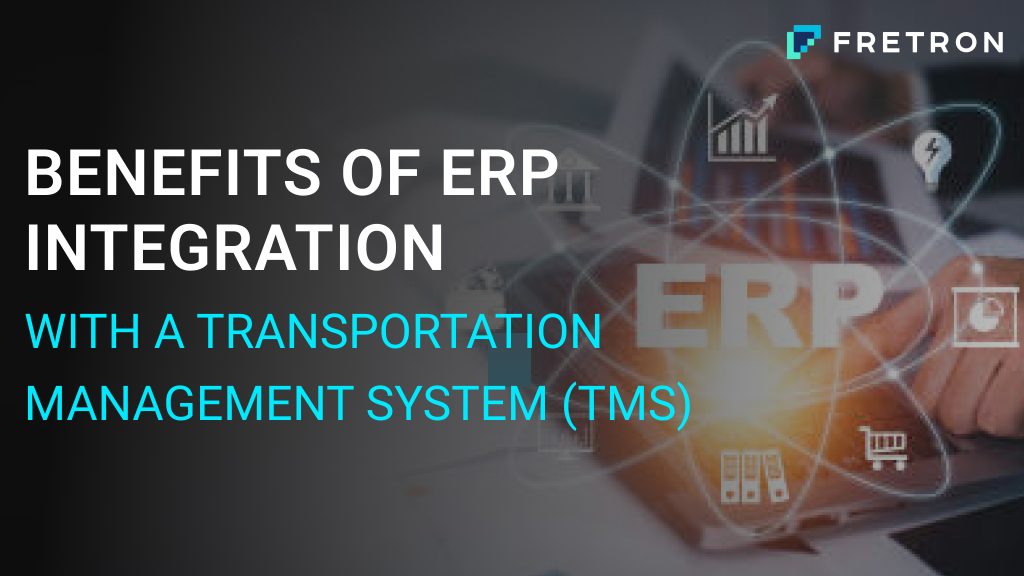
Integrating an Enterprise Resource Planning (ERP) system with a Transportation Management System (TMS) is becoming increasingly essential for shippers aiming to navigate the complexities of modern supply chains efficiently. This combination of technology solutions offers a robust framework to manage logistics operations more effectively, ensuring businesses remain competitive and are able to meet evolving customer demands. Let’s delve into the intricacies of ERP and TMS integration, exploring its significance, the challenges it addresses, and the manifold benefits it brings to the logistics sector.
Enterprise Resource Planning (ERP) System: An ERP system acts as the backbone of a company’s operations, integrating various business functions into a single, cohesive platform. It covers a broad spectrum of processes, including supply chain management, finance, human resources, procurement, inventory management, production planning, and customer relationship management (CRM). By centralizing data management, an ERP system enables organizations to streamline operations, enhance data accuracy, and facilitate informed decision-making across all departments.
Transportation Management System (TMS): A TMS, on the other hand, is specialized software designed to optimize transportation and logistics activities. It aids in load planning, carrier selection, route optimization, shipment tracking, and managing freight payment and audits. With a TMS, companies can improve the efficiency of their transportation operations, reduce costs, increase visibility into the logistics process, and enhance overall supply chain performance.
The integration of ERP and TMS systems is not merely a technological upgrade but a strategic move to unlock new levels of operational efficiency and supply chain visibility. Shippers face an array of challenges, including fluctuating customer demands, the need for real-time data access, and the pressure to reduce operational costs while maintaining high service levels. Integrating ERP and TMS systems addresses these challenges head-on, offering a seamless flow of information across the organization and empowering businesses to manage their logistics operations more effectively.
One of the most significant advantages of ERP and TMS integration is the facilitation of seamless communication between different departments and systems. This interconnectedness ensures that vital information, such as order details, inventory levels, and shipment statuses, is readily available across the organization. As a result, businesses can eliminate manual data entry, reduce the risk of errors, and enjoy real-time visibility into their supply chain operations.
By leveraging the data and capabilities of the ERP system, a TMS can automate critical logistics tasks, such as identifying the most cost-effective shipping routes, selecting carriers, and generating shipping documentation. This automation streamlines the transportation process, freeing up resources to focus on strategic initiatives and reducing the likelihood of human error.
Integrating ERP and TMS systems provides shippers with unprecedented visibility into their transportation costs, enabling more informed decision-making. Companies can use this data to negotiate better rates with carriers, identify opportunities for shipment consolidation, and uncover other cost-saving measures. Moreover, the integration facilitates accurate financial reporting and budgeting, enhancing overall financial management.
Today’s customers expect timely and accurate delivery of their orders. ERP and TMS integration empowers shippers to meet these expectations by providing up-to-date information on order status, shipment tracking, and delivery schedules. With the ability to proactively address potential issues, companies can ensure a positive customer experience and strengthen their market position.
As businesses grow and evolve, their logistics needs become more complex. An integrated ERP and TMS solution offers the scalability and flexibility needed to adapt to changing business requirements. Whether expanding into new markets, introducing new products, or adjusting transportation strategies, the integrated system can accommodate increased volumes and complexity without compromising efficiency.
While the benefits of ERP and TMS integration are clear, the process itself can be complex and requires careful planning. The cost and effort involved will vary depending on the specific systems in use, the level of customization required, and the scope of the integration. Companies should conduct a thorough cost-benefit analysis, considering both the immediate expenses and the long-term gains in efficiency, cost savings, and improved service levels.
Collaboration with experienced software vendors or integration specialists is crucial to ensure a smooth and successful integration. By clearly defining their requirements and working closely with their technology partners, businesses can develop an integration strategy that aligns with their operational goals and delivers tangible results.
The integration of ERP and TMS systems represents a strategic investment in the future of logistics and supply chain management. By combining the comprehensive data management capabilities of an ERP system with the specialized logistics optimization features of a TMS, companies can achieve a new level of operational efficiency, cost control, and customer satisfaction. As the logistics industry continues to evolve, embracing integrated technology solutions will be key to staying competitive and achieving long-term success.
We are Fretron, India’s 1st cloud-based, collaborative Transport Management System, which connects Shippers, Logistic Service Providers, and Fleet Owners to enable a simpler, efficient & responsive logistics network.
Address: 7th Floor Plot 55P, Institutional Area, Sector 44, Gurugram, Haryana 122003
Email: sales@fretron.com
Phone: 9711799111
Privacy Policy | Term of Use
© 2022 FRETRON. All rights reserved.